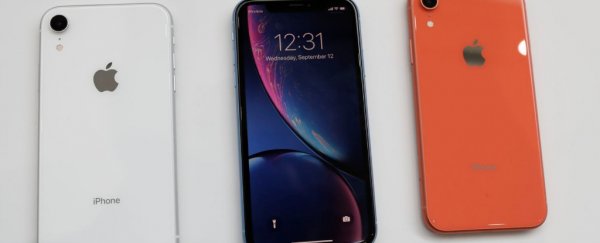Hello there, savvy iPhone shopper. Ready for an upgrade? There are a few things you should know before emptying your wallet at the Apple store.
It's an especially confusing moment: Apple will sell no fewer than eight iPhone models in 2018. But they haven't all gone on sale yet — and there are reasons to hold off on the two most-expensive ones that hit stores on Friday: the $1,000 iPhone XS and $1,100 XS Max.
Wait, isn't the new iPhone the best ever? Yes — Apple would be in serious trouble if it wasn't. And I don't have to tell you what makes an iPhone great: simple design, a great camera, software that mostly just works and free Apple support.
But the changes in the XS are incremental. Compared to last year's iPhone X, it's a bit faster, has a bit better camera and has a slightly longer-lasting battery. If you can't live without those improvements, then stop reading and go buy an XS.
There's one other category of people who should buy now: those who want all the iPhone Apple will sell. The one actually big change in this year's iPhone crop is the XS Max. It's the X-Treme Big Gulp of iPhones: Measuring 6.5 inches, its screen is larger than a Snickers, a Subway sandwich or the heel on a 6-inch stiletto. The XS Max is the closest iPhone yet to carrying a computer in your pocket, and the version with 512 GB of storage costs as much as one: $1,450.
If these phones sound too big or too expensive, then good news: You've got options. Here are five reasons to hold off before buying the iPhone XS and what to get instead.
Reason 1: The iPhone XR is coming
Apple has an October surprise planned: Another new model, called the iPhone XR is coming Oct. 26 for $750.
It has a 6.1-inch version of the latest no-edges screen design and also Apple's fastest processor. The XR appears to be 90 percent as good as the iPhone XS for 75 percent of the price. (It also comes in cooler colors, including coral and blue.)
Come October, we'll be able to better judge the corners Apple cut with it. Those include a lower-quality screen, less-fancy case and just one back-facing camera. So just hang tight for a month.
Reason 2: Your thumbs rule
The iPhone XS and XS Max don't have fingerprint readers. Apple is putting the beloved home button out to pasture, in favor of the authenti-face system it debuted on the iPhone X, called FaceID. It works about 90 percent of the time for me.
If your thumb is not ready to let go, you can grab a still-speedy and finger-friendly iPhone 8, which Apple is now selling for $600. Or, a new iPhone 7 costs just $450.
Reason 3: Your not-giant hands
The 5.7-inch XS is the smallest of Apple's new iPhones, but it is still pretty large for some people's hands. If you miss the old days when a phone could fit in a pair of skinny jeans, hunt down a 4-inch iPhone SE.
Apple has officially stopped selling the SE. But the version of the SE that came out in 2017 is still as speedy as an iPhone 6S and runs Apple's latest iOS 12. I found refurbished ones on eBay and elsewhere for $170. (Also, the Earth will thank you for buying something used.)
Reason 4: You're Android-curious
A new Pixel phone from Google is expected to arrive Oct. 9 that might make Apple people jealous. Google has wowed in the past with the quality of its camera, as well as its sleek version of the Android operating system.
And Samsung's $1,000 Note9 phone, which came out in August, in some ways out-maxes even the iPhone Xs Max. It has a 6.4-inch screen, a stylus, an iris reader, and even the ability to plug in a keyboard, mouse and desktop-sized monitor. Oh, and it comes in lavender.
Reason 5: You don't have $200 burning a hole in your pocket
You can buy an iPhone X, which is 95 percent as good as the new XS. Apple no longer officially sells it, but you can find one on eBay for about $800. Brand new. You'll get Face ID, dual back cameras, portrait mode and fun dancing-poop Animojis.
The iPhone X looks almost identical to the newest stuff, so no one will really know. And you'll be $200 richer.
2018 © The Washington Post
This article was originally published by The Washington Post.
